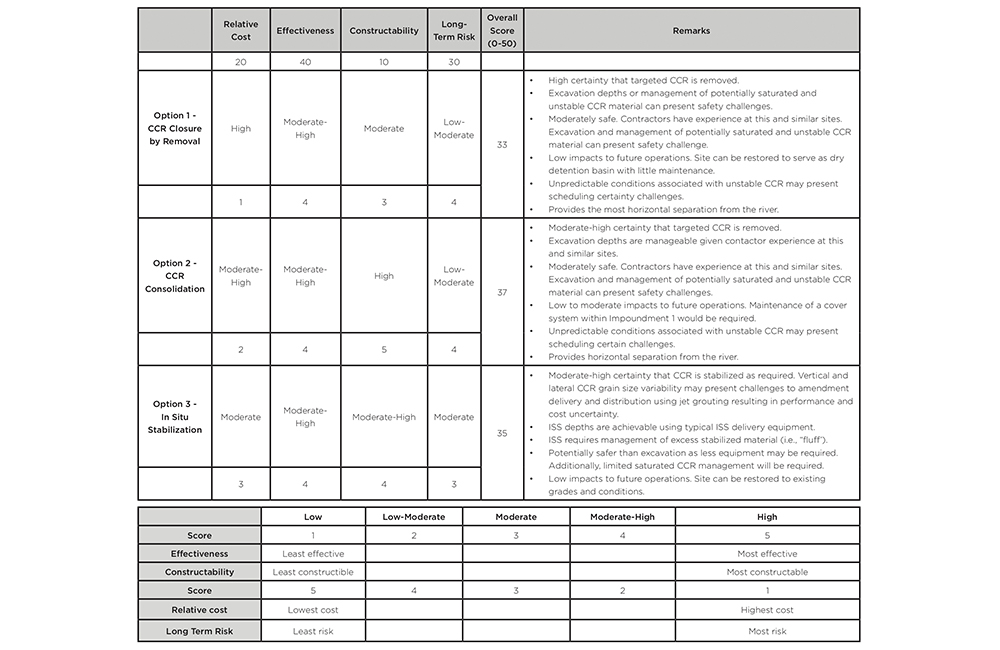The Disposal of Coal Combustion Residuals (CCR) from Electric Utilities final rule promulgated by the U.S. Environmental Protection Agency requires surface impoundments and landfills at the coal-fired power plants it regulates to undergo groundwater monitoring.
When groundwater monitoring results show any constituents of potential concern listed in the CCR rule at statistically significant levels that exceed groundwater protection standards (GWPS), the unit’s owner or operator is obligated to take action. Unless the excess GWPS levels can be attributed to an alternate source or sampling, analysis or evaluation error, nearby property owners and the general public must be notified and the nature and extent of contaminants that exceed GWPS must be characterized. A corrective measures assessment and groundwater remedy selection must also be completed. These can come at potentially high legal risk and financial costs.
Groundwater compliance requirements should be considered early in the planning and design process, typically during a feasibility study or impoundment closure alternative evaluation. From alternative cover systems and grading designs to waste consolidation and in situ treatment, the options that emerge can be screened for feasibility, cost, effectiveness and overall value. In some cases, the potential cost and risk of groundwater contamination and associated corrective actions justify substantive modifications or enhancements to impoundment closure methods.
While early consideration of groundwater impacts can reduce future risks and cost, the converse is also true. If groundwater issues are not considered during planning and design, project costs and risks can grow — particularly if corrective actions are required after closure is complete. Coal ash removal from a saturated zone, groundwater extraction, in situ water treatment and other corrective actions may, for example, require the costly removal or penetration of cover systems and double-handling of waste.
Addressing groundwater issues from the beginning, in other words, can be far less costly than retrofitting a closure or implementing active groundwater remedies in the future.


